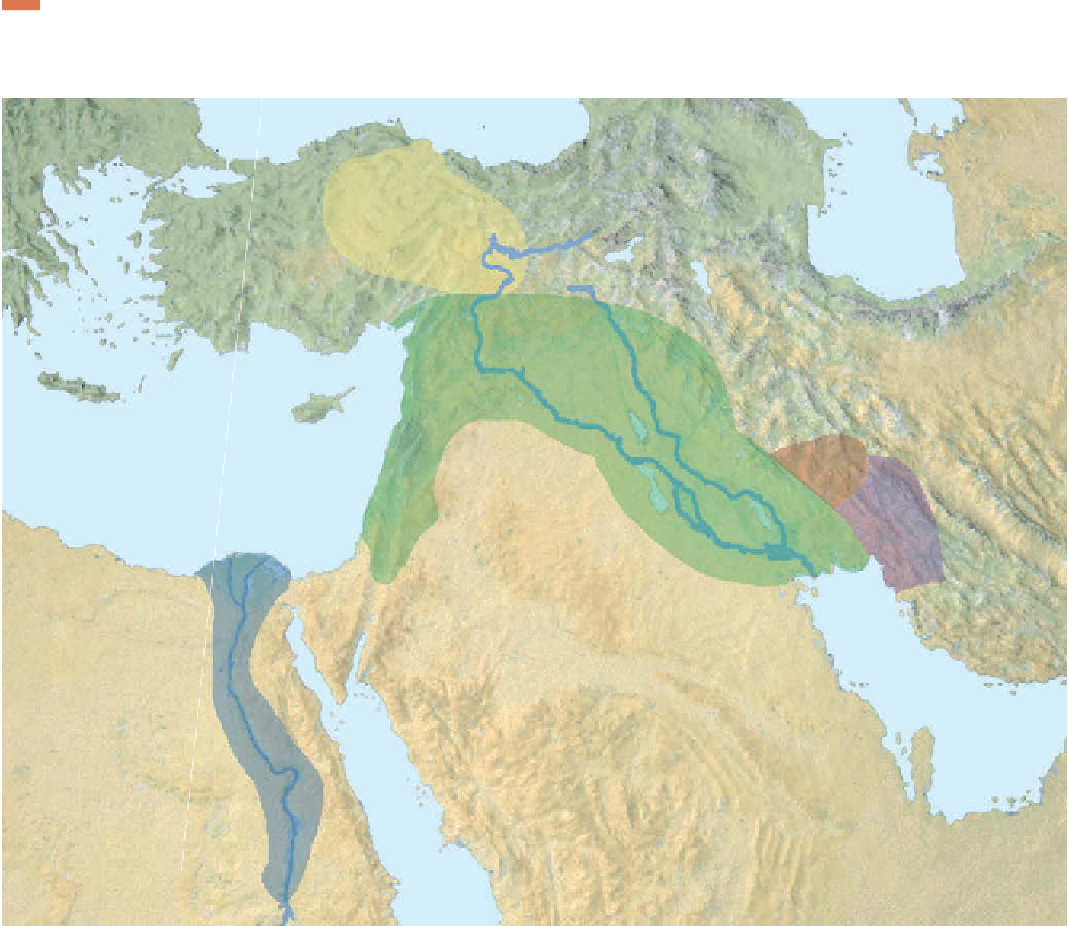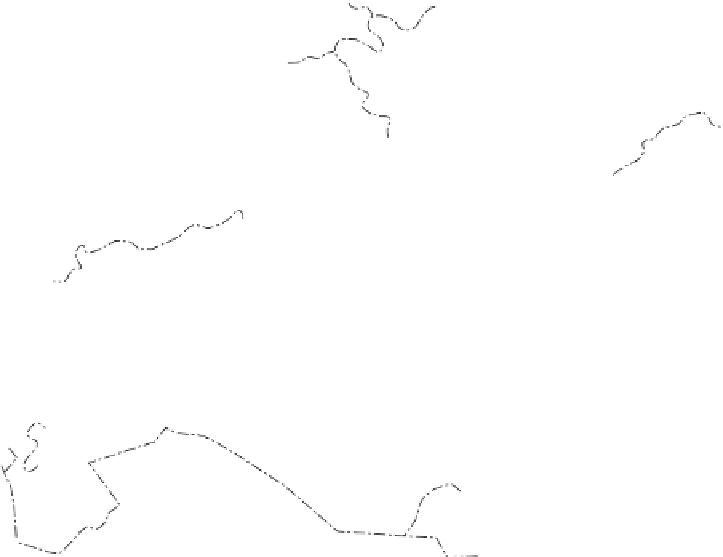Geography Reference
In-Depth Information
The planned cultivation of
seed crops
, plants that
are reproduced by cultivating seeds, is a more complex
process, involving seed selection, sowing, watering, and
well-timed harvesting. Again, the practice seems to have
developed in more than one area and at different times.
Some scholars believe that the fi rst domestication of seed
plants occurred in the Nile River Valley in North Africa,
but the majority view is that this crucial development took
place in a region of Southwest Asia (also called the Fertile
Crescent), through which fl ow the two major rivers of
present-day Iraq: the Tigris and the Euphrates (Fig. 11.3).
The cultivation of seed crops marked the beginning of
what has been called the
First Agricultural Revolution
.
Archaeologists note that a number of changes
occurred in Southwest Asia along with plant domestica-
tion. First, the plants themselves changed because peo-
ple would choose seeds from the largest, heartiest plants
to save for planting, yielding domesticated plants that
grew larger over time than their counterparts in the
wild. Archaeologists in Southwest Asia have found pre-
served seeds, which tell them which plants were being
domesticated and when. The grain crops wheat and bar-
ley grew well in the warm Southwest Asian climate.
Soon, people found that the river-inundated plains of
Mesopotamia provided irrigable fi elds for farming.
Agriculture provided a reliable food source, and grain
surpluses enabled people to store grain for long-term
distribution and use and to settle permanently in one
place. In the process, the population of settlements
began to increase.
Figure 11.3
The Fertile Crescent and Nile River Valley.
The Fertile Crescent and Nile River Valley
were two hearths of the fi rst agricultural revolution. Modern political boundaries are shown for
reference.
© E. H. Fouberg, A. B. Murphy, H. J. de Blij, and John Wiley & Sons, Inc.
ck
30°
40°
50°
40°
Hattusas
URARTU
HITTITES
1600-1200 B.C.E.
ASIA
MINOR
ASSYRIA
2000-600 B.C.E.
Assur
MEDIA
SYRIA
URUK
3500 B.C.E.
Sidon
Tyre
Babylon
Syrian
Desert
BABYLON
1900-539
B.C.E.
Susa
e
PALESTINE
ELAM
3000-640
B.C.E.
Jerusalem
SUMER
3200-1950 B.C.E.
Ur
30
°
ARABIA
UPPER
EGYPT
Persepolis
THE FERTILE CRESCENT
AND THE NILE VALLEY
Mesopotamia
Memphis
Sinai
Uruk
EGYPT
3000-343 B.C.E.
Egypt
Elam
Libyan
Desert
Hittites
Dates represent range of each
kingdom's existence
Thebes
LOWER
EGYPT
0
250
500
750 Kilometers
0
250
500 Miles
30°
50°
40°































































